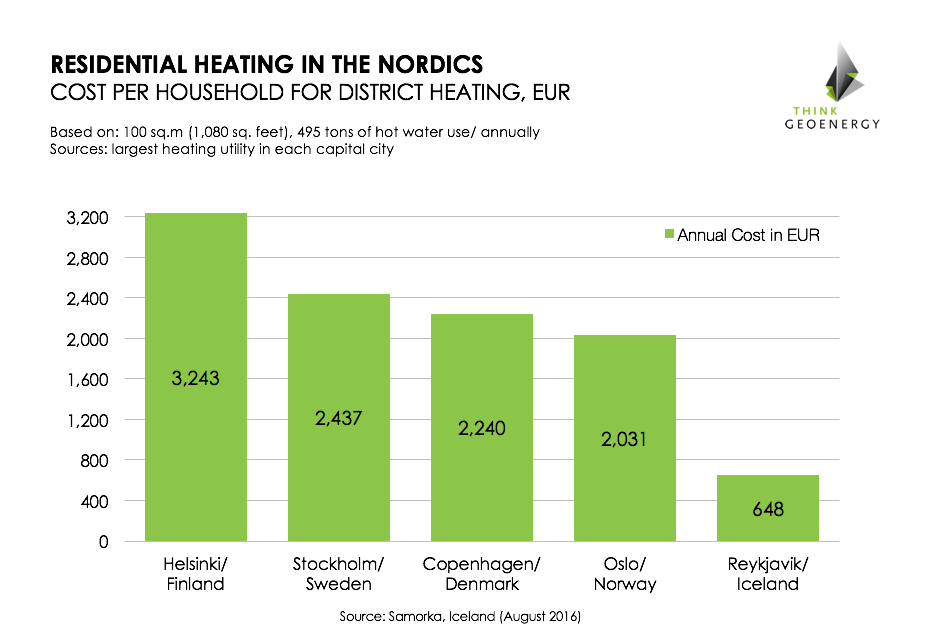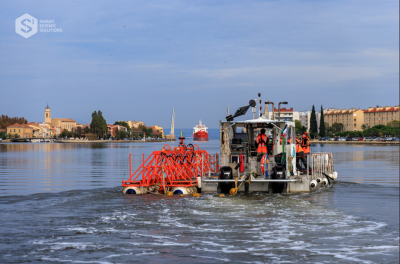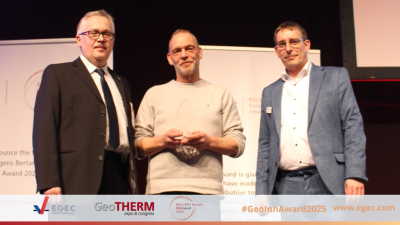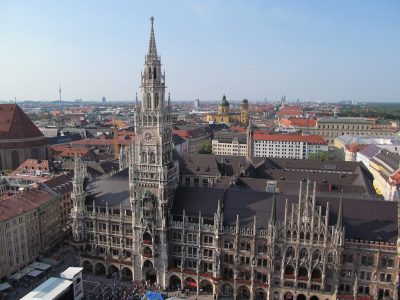Geothermal energy giving Iceland lowest heating costs in the Nordics
Geothermal energy provides Icelandic households the cheapest rates for house heating in the Nordic countries, nearly one fifth of the comparable cost for heating in Finland's capital of Helsinki.
Iceland is proud of its geothermal energy heritage and continuously boasts the benefits it brings to its people, be it in the quality of living, swimming outside year-round, low electricity costs, growing vegetables year-round near the Arctic Circle … last but not least the geothermal wonders visited by tourists and Icelanders alike.
But there are not only the overall benefits to the well-being of people or economic benefits to the country itself. While all over the world, people experience high utility costs particularly in countries that need heating during colder months, people residing in Iceland benefit from the lowest heating costs of all the countries in the Nordics.
The Nordics are the countries of Finland, Sweden, Denmark, Norway and Iceland.
In a recent study done by Samorka, the Federation of Energy and Utility Companies in Iceland, the cost of household heating in the capital cities of the Nordic countries was analysed.
According to the study, it costs five times more per year to heat households in Helsinki in Finland than in Reykjavik, the capital city of Iceland. Central heating costs are far lower in Iceland and is three times lower than the next cheapest is heat.
The findings are based on data from the largest utilities providing district heating in each of the capital cities compared for the study.
For easier reading, I adapted the charts by Samorka and provided data in EUR based on the exchange rate of August 16, 2016, the release date of the report.

In Reykjavik, the annual cost of heating for a 100 square meter apartment (around 1,080 square feet) and an estimated use of 495 tons of oil equivalent/ annually, the cost is EUR 648 ($724), compared to this – residents of Helsinki, the capital of Finland pay nearly five times the amount or EUR 3,243 ($3,623) per year.
The second most expensive city, based on heating cost is Stockholm/ Sweden, followed by Copenhagen/ Denmark and Oslo/ Norway.
The study by Samorka also looks into taxation for heating and this is where things become quite interesting. While the overall cost for the heating itself is very similar across in Helsinki, Stockholm, Copenhagen and Oslo, a special tax significantly adds to heating costs in Helsinki.

With 90% of all households in Iceland heating with geothermal energy, in Reykjavik all houses are utilising geothermal heat. Apart from being a renewable and environmentally friendly source of energy, the cost element clearly is significant. In the Nordic countries, electricity or fossil fuels are the main source of heating.
Attention: there was a mistake in the charts with regards to the assumptions … it is not 495 tons of oil equivalent, but rather 495 tons of hot water per household. I apologize for the mistake, but have updated the charts above to reflect that.
Source: Samorka


















